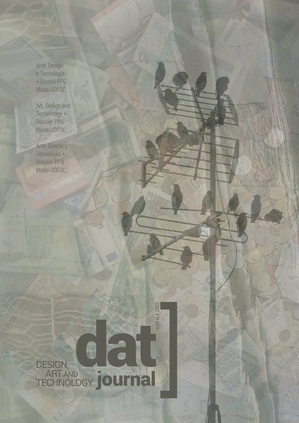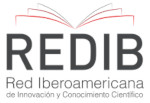Algorithmic Precedents
exploring the creative potential of the reuse and adaptation of parametric models
DOI:
https://doi.org/10.29147/datjournal.v10i1.856Keywords:
Parametric Modeling, Precedents, Analogias de ProjetoAbstract
This research investigates the computational logic behind parametrically generated architectural forms, aiming to create new models based on logical principles analogous to the analyzed cases. It starts from the premise that there is an intrinsic relationship between architectural form and the mathematical rules that produced it, allowing for the inverse hypothesis: by analyzing forms generated through parameterization, it is possible to identify and reproduce the underlying computational logics. Understanding the generative mechanisms of a geometry has the potential to enable the identification, adaptation, and transfer of logical elements from a design precedent that can be reused and adjusted in new design situations, producing distinct geometric variations generated by similar or analogous logical principles. The research takes place in two stages: first, three architectural examples whose formal logics allow parametric modeling are selected; then, it investigates how parametric models can generate new forms by reusing and adapting elements of the computational logic of these precedents through the establishment of design analogies.
Downloads
References
BAD. K1299. [s. l.], 2015. Disponível em: https://www.builtbyassociativedata.com/corporate/k1299. Acesso em: 11 set. 2023.
CASAKIN, Henran. Visual Analogy as a Cognitive Strategy in the Design Process: Expert versus Novice Performance. Journal of Design Research on Design Expertise, [S. l.], n. 4 (2), 2004. DOI: https://doi.org/10.1504/JDR.2004.009846
GISELBRECHT, Ernst. Dynamic facade (Kiefer technic showroom) by Ernst Giselbrecht + Partner | Office buildings. [s. l.], [s. d.]. Disponível em: https://www.architonic.com/en/project/ernst-giselbrecht-partner-dynamic-facade-kiefer-technic-showroom/5100449. Acesso em: 8 set. 2023.
GRIFFITHS, Alyn. Qingdao Cruise Terminal’s angular facade references boats’ sails. [s. l.], 2017. Disponível em: https://www.dezeen.com/2017/06/29/qingdao-cruise-terminal-angular-facade-roof-references-boats-sails-mozhao-atelier-jing-studio-architecture-china/. Acesso em: 11 set. 2023.
HUDSON, Roland. Strategies for parametric design in architecture. An application of practice led research. 2010. - University of Bath, UK, [s. l.], 2010.
OXMAN, R. Prior Knowledge in design: a dynamic knowledge-based model of design and creativity. Design Studies, [S. l.], 1990. DOI: https://doi.org/10.1016/0142-694X(90)90011-Z
OXMAN, Rivka. Precedents in design: A computational model for the organization of case knowledge. Computing in Civil Engineering (New York), [S. l.], n. 1, p. 438–445, 1994.
OXMAN, Rivka. Thinking difference: Theories and models of parametric design thinking. Design Studies, [S. l.], 2017. Disponível em: https://doi.org/10.1016/j.destud.2017.06.001 DOI: https://doi.org/10.1016/j.destud.2017.06.001
PEDGLEY, Owain. Capturing and analysing own design activity. Design Studies, [S. l.], v. 28, n. 5, p. 463–483, 2007. Disponível em: https://doi.org/10.1016/j.destud.2007.02.004 DOI: https://doi.org/10.1016/j.destud.2007.02.004
Qingdao Cruise Terminal / CCDI - MOZHAO Studio + CCDI JING Studio | ArchDaily. . [s. l.], 2017. Disponível em: https://www.archdaily.com/874265/qingdao-cruise-terminal-ccdi-mozhao-studio-and-jing-studio?ad_medium=gallery. Acesso em: 23 set. 2021.
SCHÖN, D. A. The reflective practitioner: How professionals think in action. London: Temple Smith, 1983. E-book.
SCHUMACHER, Patrik. Parametricism: A new global style for architecture and urban design. [S. l.: s. n.] Disponível em: https://doi.org/10.1002/ad.912 DOI: https://doi.org/10.1002/ad.912
VINNITSKAYA, Irina. Kiefer Technic Showroom / Ernst Giselbrecht + Partner | ArchDaily. [s. l.], 2010. Disponível em: https://www.archdaily.com/89270/kiefer-technic-showroom-ernst-giselbrecht-partner. Acesso em: 8 set. 2023.
WHAT’S IN PORT. Qingdao China Cruise Port Guide. [s. l.], [s. d.]. Disponível em: https://www.whatsinport.com/Qingdao.htm. Acesso em: 11 set. 2023.
WOODBURY, Robert. Elements of Parametric Design. 1. ed. London and New York: Routledge, 2010. v. 1E-book.
ZARZAR, Karina Moraes. Use and adaptation of precedents in architectural design: toward an evolutionary design model. 2003. - Delft University of Technology, Delft, Netherland, 2003.
Downloads
Published
How to Cite
Issue
Section
License
Copyright (c) 2025 DAT Journal

This work is licensed under a Creative Commons Attribution 4.0 International License.


























